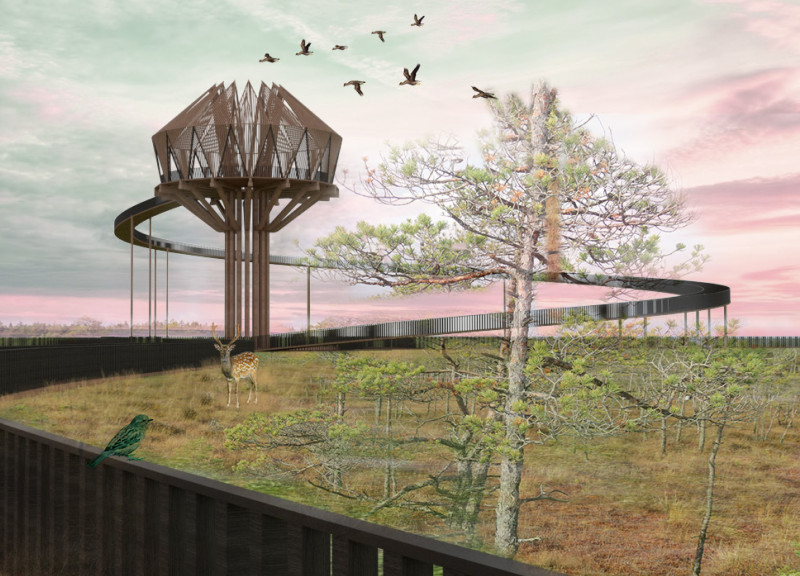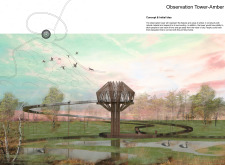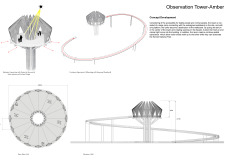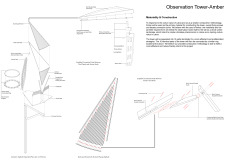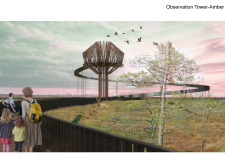5 key facts about this project
### Overview
The Observation Tower-Amber is situated within Kemeri National Park in Latvia, an area celebrated for its unspoiled landscapes and rich biodiversity. The structure is designed to promote engagement with the natural environment while reflecting the significance of amber in Latvian culture. The project aims to create a space for observation and contemplation, offering visitors a retreat from urban life and a deeper connection to their surroundings.
### Spatial Strategy and Accessibility
The tower features a circular configuration that provides panoramic views of the park, serving both as a lookout and a communal gathering area. A gently sloping ramp encircles the structure, ensuring accessibility for individuals with varying mobility needs. This design enhances the visitor experience by providing a gradual ascent, allowing for interaction with the landscape throughout the journey. The central atrium facilitates natural ventilation and light, integrating the environment into the building's interior.
### Materiality and Sustainability
The material selection emphasizes local resources, predominantly using timber to align with traditional construction practices while minimizing environmental impact. Key materials include timber for structural elements, glass panels for transparency and light, and a metal framework for structural integrity. Concrete serves as a foundational component, ensuring durability. Additionally, the prefabricated nature of the design, composed of 16 components, promotes efficient assembly and supports sustainable construction methods. This careful consideration of materiality reinforces the project's commitment to environmental stewardship while honoring cultural heritage.


